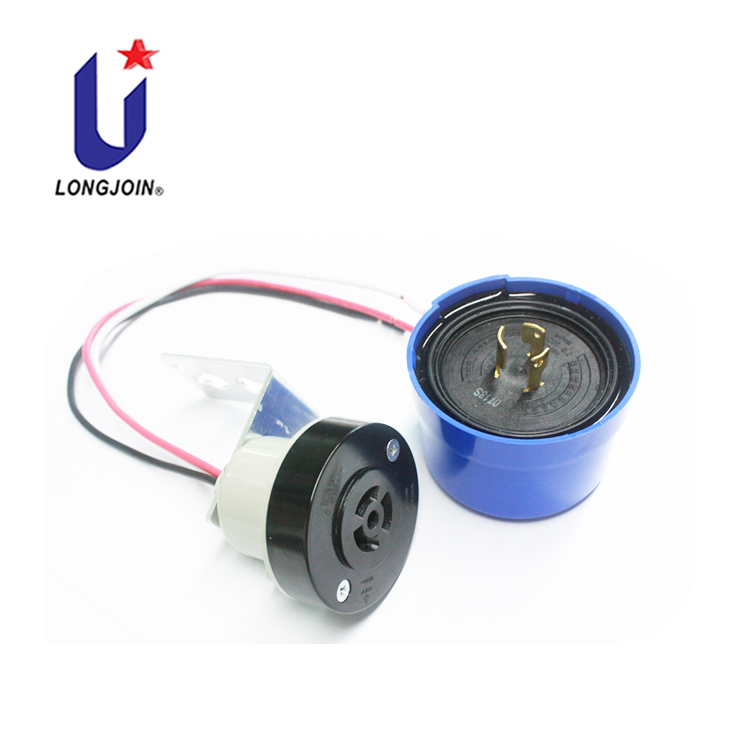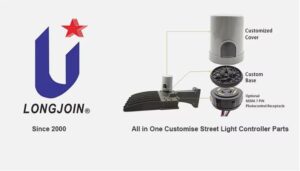Объяснение проводных фотоэлементных датчиков: подробный анализ основных компонентов и функций
Проводные фотоэлементные контроллеры являются ключевыми для систем наружного освещения. Они управляют включением и выключением света. Эти контроллеры состоят из нескольких частей, которые работают вместе. Давайте разберем эти компоненты и посмотрим, как они функционируют.


Светочувствительные элементы
Сердцем контроллера являются светочувствительные элементы. Они обнаруживают изменения освещенности и посылают сигналы.
Роль фотоэлементного датчика
А фотоэлементный датчик это тип светочувствительного элемента. Он распознает окружающий свет и реагирует соответствующим образом. Когда он обнаруживает слабую освещенность, он включает свет. Когда уровень освещенности повышается, он выключает его.
The фотоэлементный датчик является ключевым в этом процессе. Он помогает автоматизировать освещение, уменьшая необходимость ручного управления.


Другие типы светочувствительных элементов
В дополнение к фотоэлементный датчик, есть и другие светочувствительные элементы:
- Фоторезисторы: Они изменяют сопротивление в зависимости от уровня освещенности.
- Фотодиоды: Преобразование света в электрический ток.
- Фотоэлементы: Они похожи на фотодиоды, но работают в другом масштабе.
Все эти элементы помогают обнаруживать свет, но датчик чаще всего используется в проводных контроллерах фотоэлементов.
Реле или тиристоры
Реле и тиристоры помогают управлять цепью после фотоэлементный датчик обнаруживает изменение света.
Работа реле
Когда фотоэлемент датчик чувствует темноту, активирует реле. Реле замыкает цепь, позволяя электричеству течь к свету. Это включает свет.
Работа тиристоров
Тиристоры, с другой стороны, работают по-другому. После активации они остаются включенными. Для их выключения требуется ручной сброс. Тиристоры полезны для длительного переключения.
Реле и тиристоры работают вместе, обеспечивая точную реакцию системы освещения на изменения освещенности.
Печатные платы
Печатная плата — это главный контроллер системы. Она соединяет все компоненты, обеспечивая их совместную работу.
Функция печатной платы
На печатной плате размещены фотоэлементный датчик, реле и другие ключевые компоненты. Он помогает направлять сигналы и обеспечивать надлежащую работу. Он интерпретирует сигналы от фотоэлементный датчик и активирует реле или тиристоры соответственно.
Без хорошо спроектированной печатной платы контроллер не будет работать должным образом. Это мозг, стоящий за контроллером фотоэлемента.
Компоненты на печатной плате
Обычные компоненты, которые можно найти на плате, включают конденсаторы, резисторы и транзисторы. Эти элементы помогают сглаживать электрические сигналы и контролировать ток.
Корпуса
Корпус защищает внутренние компоненты контроллера фотоэлемента. Он защищает плату от грязи, воды и пыли.
Роль ограждения
Корпус играет решающую роль в обеспечении долговечности контроллера. Он защищает чувствительные компоненты от воздействия окружающей среды. Он также помогает рассеивать тепло, предотвращая перегрев.
Прочный и долговечный корпус обеспечивает безопасность, особенно при использовании на открытом воздухе.
Соединительные клеммы
Соединительные клеммы используются для подключения контроллера к внешним источникам питания и осветительным приборам. Они имеют решающее значение для обеспечения надлежащего функционирования.
Важность правильных соединений
Для работы контроллера фотоэлементов необходимы правильные соединения. Ослабленные или неправильные соединения могут привести к сбою системы. Клеммы обеспечивают подачу питания контроллеру и возможность эффективного управления освещением.
Правильно закрепленные клеммы являются залогом надежности и безопасной эксплуатации.
Дополнительные аксессуары
Некоторые контроллеры фотоэлементов включают в себя дополнительные аксессуары, улучшающие производительность.
Схемы задержки времени
Часто включаются схемы задержки времени, чтобы предотвратить быстрое переключение. Они задерживают реакцию, гарантируя, что свет не будет мерцать при небольшом изменении уровня освещенности.
Световые щиты
Легкие щиты защищают умный датчик от чрезмерного света. Это предотвращает ложные показания и обеспечивает точное обнаружение света.
Индикаторные лампы
Индикаторные лампы показывают, работает ли система правильно. Они предупреждают пользователей, если контроллер неисправен или находится в определенном состоянии.
Регулировочные ручки
Регулировочные ручки позволяют пользователям точно настроить чувствительность датчика фотопереключателя. Это помогает адаптировать контроллер к конкретным потребностям освещения.
Подведение итогов
Проводные контроллеры фотоэлементов необходимы для современного наружного освещения. Они используют такие компоненты, как датчик, реле, печатные платы и корпуса. Дополнительные аксессуары, такие как временные задержки и световые экраны, делают эти системы еще более универсальными.
Роль фотоэлементный датчик в этих контроллерах имеет решающее значение. Это помогает гарантировать, что свет будет включен только тогда, когда это необходимо, сокращая потери энергии. По мере развития технологий контроллеры фотоэлементов будут продолжать совершенствоваться и интегрироваться в более интеллектуальные системы освещения.
Часто задаваемые вопросы
Что такое фотореле и как оно работает в проводном контроллере фотоэлементов?
Датчик фотоэлемента определяет изменения уровня освещенности. Когда он определяет низкий уровень освещенности, он посылает сигнал на контроллер фотоэлемента, чтобы включить освещение. Когда он определяет достаточное количество света, он его выключает. Это помогает автоматизировать наружное освещение на основе условий окружающего освещения.
Как фотоэлементный контроллер помогает экономить энергию?
Контроллер фотоэлементов с помощью датчика обеспечивает включение света только при необходимости. Он определяет уровень естественного освещения и выключает свет в течение дня. Это предотвращает трату энергии. Это приводит к значительной экономии энергии в системах наружного освещения.
Какие компоненты входят в состав проводного контроллера фотоэлементов?
Проводной контроллер фотоэлементов состоит из нескольких основных компонентов:
●Датчик фотопереключателя: обнаруживает изменения освещенности.
●Реле или тиристоры: управляют включением света.
●Печатная плата: управляет потоком электрических сигналов.
●Корпус: защищает внутренние компоненты. Дополнительные детали включают в себя схемы задержки времени, световые экраны и ручки регулировки. Все эти компоненты работают вместе для автоматизации освещения в зависимости от условий освещенности.
Внешняя ссылка
https://www.techtarget.com/whatis/definition/thyristor#:~:text=A%20thyristor%20is%20a%20four,%2Dcontrolled%20rectifier%20(SCR)






